how to draw a top
Beginners Guide: Realistic Pencil Drawing
Updated: 25 Jun 2021

Pencil drawing is monochromatic, meaning that it has a single hue (gray), but with different brightness values (from very light gray to very dark gray).

To get realistic results when drawing with pencils, start by drawing the form accurately. Then, brightness values are the key. Meaning, how dark or light each area is. In addition, edges and transitions are super important.
While there are many factors when it comes to drawing realism, here I will focus on the most important ones.
The 4 key factors for realistic pencil drawing are:
- Precision Drawing
- Brightness Values
- Edges
- Transitions
Note:
At the end of this tutorial, you will find some practical drawing tips.
Precision Drawing
Each object or figure has distinct characteristics and a unique form. Therefore, in order to produce a realistic result, the craft of drawing must be precise.
In order to draw in an accurate way, we need to understand what we are looking at, and to remember that we draw what we see and NOT what we know.
Foreshortening:
When drawing in perspective (a set of guidelines for drawing in a realistic way), objects are subject to foreshortening.
In the following example, we know that the top part of a candle is round (circle), but when we draw what we see (when drawing a side view), the top part of the candle is actually elliptical:
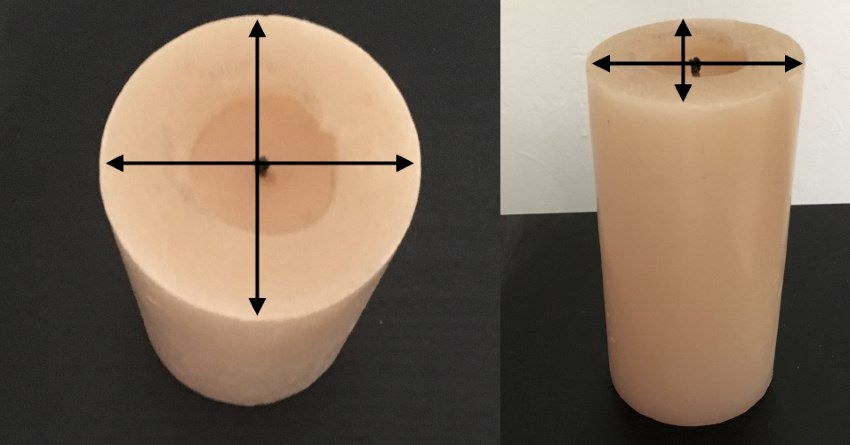
Opposite phenomenon occurs when looking from above. The candle's long cylindrical body becomes shorter due to foreshortening:
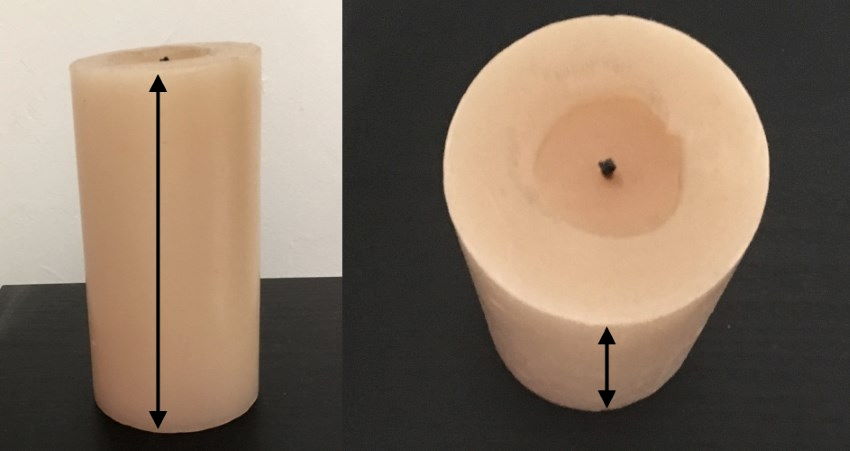
Explanation:
In perspective, objects that are in front of the observer will look smaller as they are farther away.
Because they are in front of the observer, they will keep the ratio between width and height, meaning there will be no distortion, the object will look the same only smaller.
On the other hand, objects or surfaces along the line of sight will be distorted (meaning, foreshortened).
The reason is the observer angle of sight. The more a surface is in the direction of our sight, the shorter it will be.
To get a deeper understanding on foreshortening, read my guide on how to draw objects from imagination.
How to draw accurately:
Drawing is done in a two-dimensional way, on a flat paper. We disregard the third dimension, which is depth, and look at objects in a 2D way: width, height and angles.
Use your pencil to see the angle of any line you choose to draw.
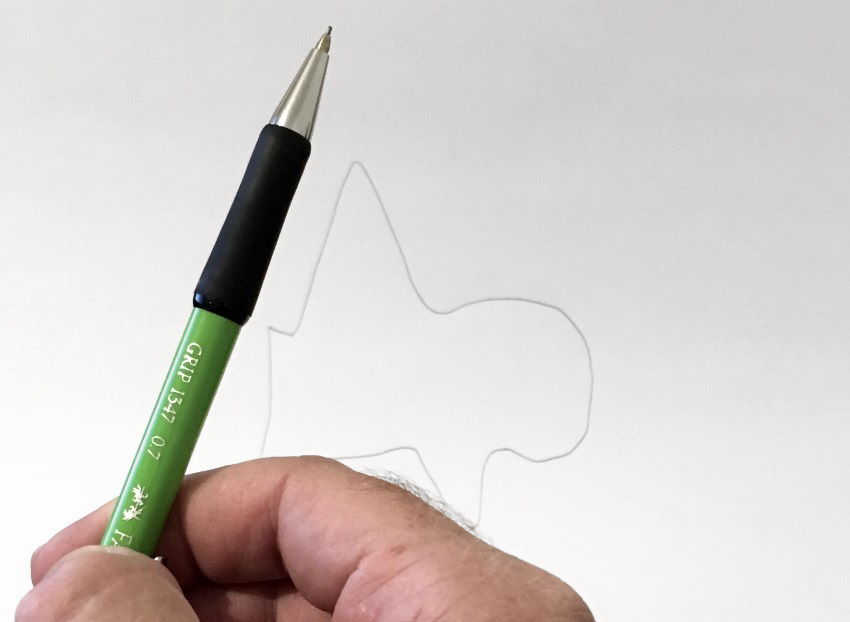
Do the the same for complex drawings, like portraits.
In the next example, I paid attention the the angle of the eyes.
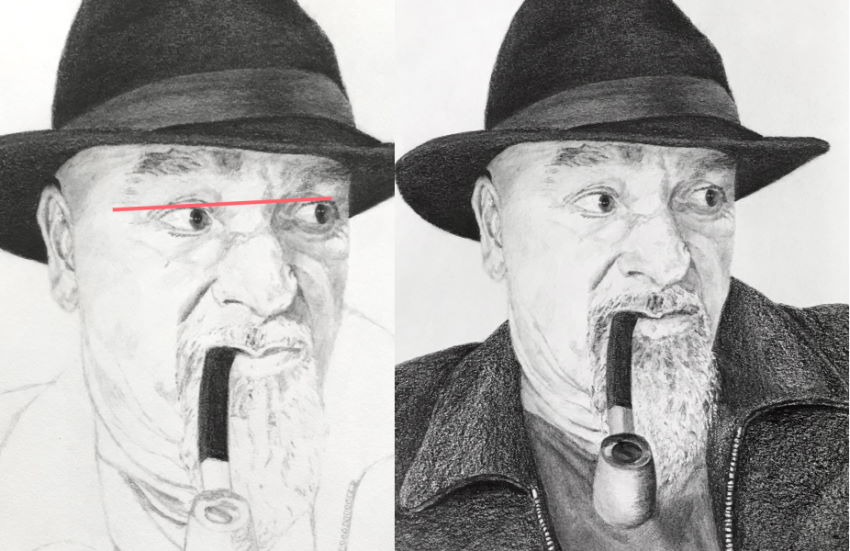
There are many techniques to draw accurately.
In my guide on how to draw accurately from observation, you can learn the techniques I teach my students, which help them produce super accurate drawings.
Tip:
When two people look at an object from a different angle, they will draw it differently. The same happens with our eyes. Each eye looks at an object from a different angle. To draw accurately, close one eye when you are using a pencil to measure its dimensions and angles.

Look at some coloring pages on your screen and try to reproduce them.
Drawing the form (structure) accurately, is the most important part of realistic drawing.
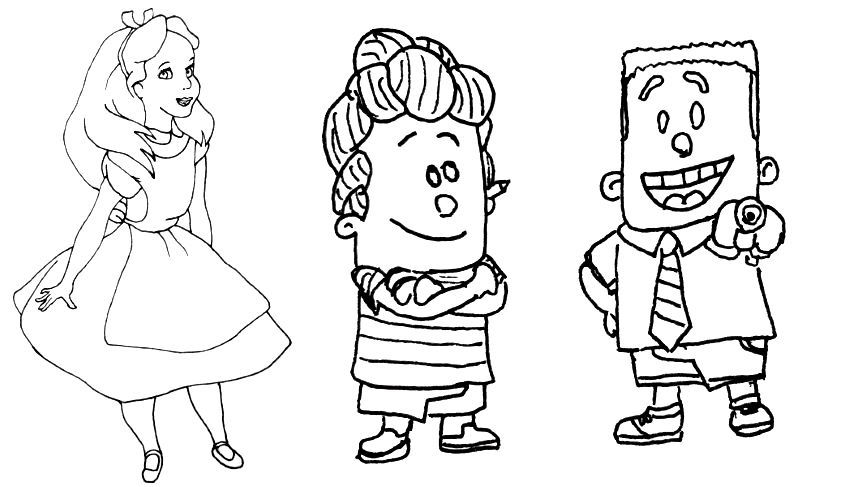
Remember:
Learning to draw accurately from observation is crucial for drawing realism.
It will give you the freedom to draw any subject or style.
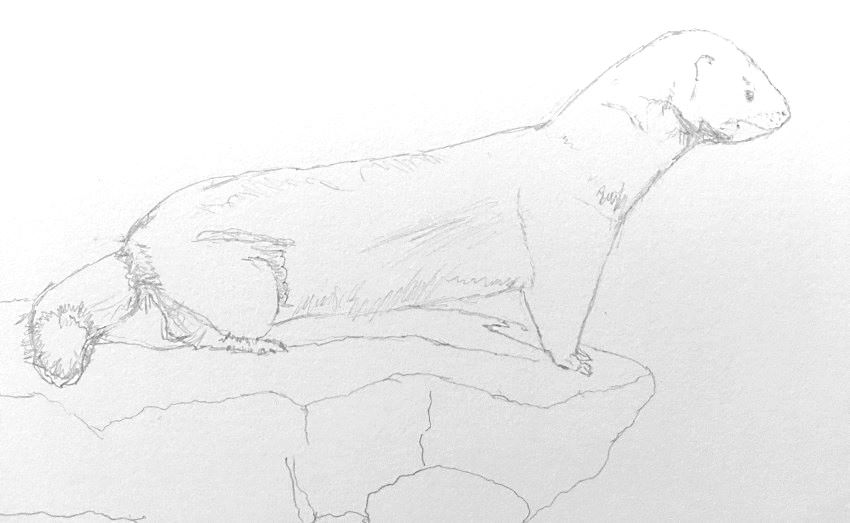
After you master drawing anything in proportion, you can deal with the other factors of drawing realism.
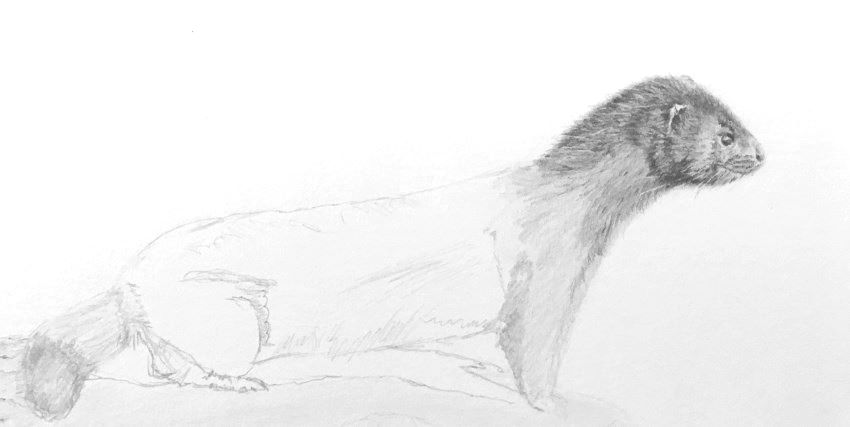
Understanding brightness values is essential, and I will cover it next.
 Realistic pencil drawing of a mink
Realistic pencil drawing of a mink
Brightness Values
What are brightness values?
Brightness values or values are how light or dark any area of the drawing is.
Brightness values play a crucial role in creating the illusion of depth and three-dimensional forms on a two-dimensional surface.
What is pencil drawing?
Pencil drawing, at its most basic form is putting graphite particles on paper.
To do that, we use pencils.
Pencils come in different hardness levels. Hard pencils will only put a little amount of graphite particles on a paper, resulting in a lighter/brighter value (H levels for hardness).

On the other hand, soft pencils will put a big amount of graphite on a paper, which result in a darker value (B levels for blackness).

How to use a pencil?
For any type of pencil, the amount of pressure applied while drawing determines the brightness value. More pressure will create a darker value and less pressure will create a lighter value.
It is recommended to use a number of drawing pencils with different darkness levels for different brightness values.
Sharp pencils are suitable for small details. For smooth transitions, sometimes, it is useful to use non-sharp pencils.
For a list of materials that I use for drawing, visit my essential pencil-drawing supply review.
How to practice?
Know your tools! Practice on creating gradual transitions in brightness values for each pencil grade you use.
That will help you determine how much pressure to use for each different brightness value and how dark or light you can go with each pencil grade:
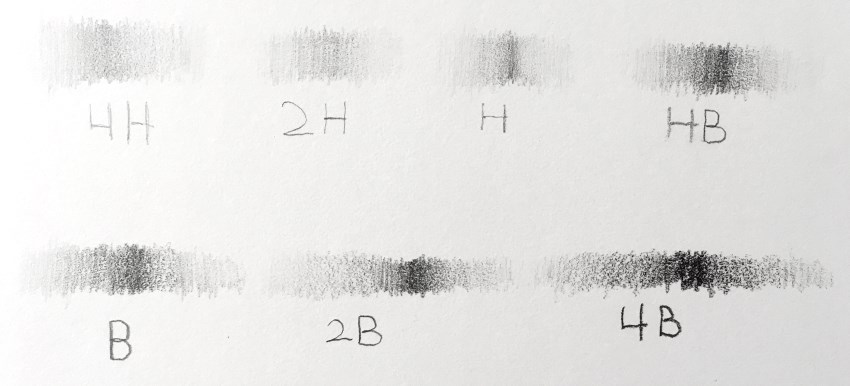
Brightness values can be altered using a kneaded eraser.
By gently tapping on a drawing surface, the kneaded eraser will collect graphite particles and therefore result in a lighter value.

How to determine brightness values?
Observation is the key to identifying the brightness values of any object or image.
Each part of the drawing should be examined to see if it is darker or lighter than the object you are trying to draw and then corrected accordingly.
In addition, it is important to pay attention to the range and variety between the darkest areas and the brightest:
- If the range or difference between dark and light areas is small, the drawing may appear flat.
- When the range between dark and bright areas is large, the drawing will be noticeable and will have volume and depth.
In other words, there should be enough contrast between dark and bright parts of the drawing in order for it to look rich and intense.
Tip:
Sometimes when looking at a complex object, especially with colors (or texture), it is hard to see how dark or light each area is.
To solve this problem, squint while observing, in order to lose focus.
When both eyes are partly closed you can focus on brightness values and disregard other distractions.
Exercise:
Try drawing your hand. Start by marking the drawing paper, so you can always put your hand back at the same place.
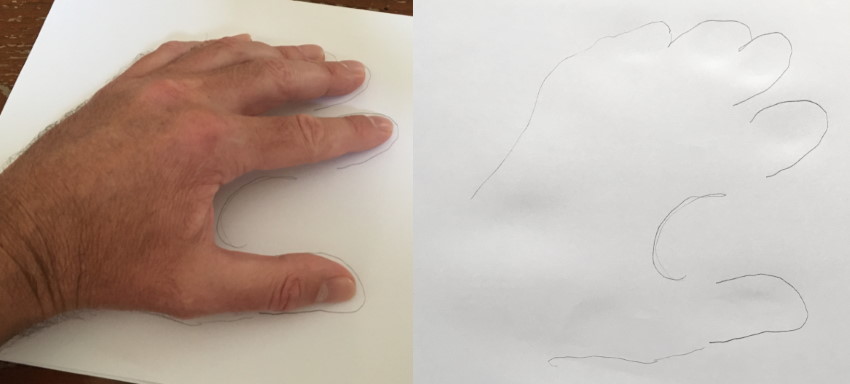
Unless you are using a table lamp, difference in brightness values will be subtle and therefore, it is a great practice to master values.
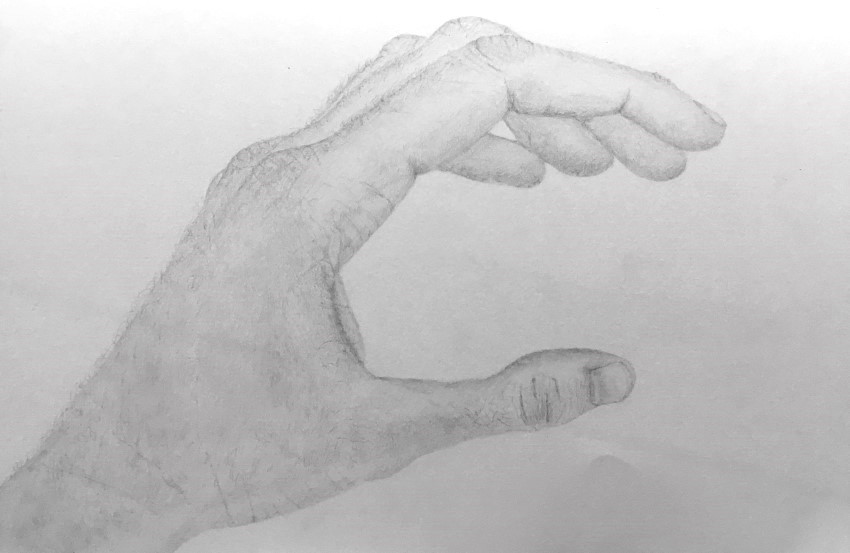
Arguably, the hardest form of drawing is portraiture.
It is critical to be accurate both in drawing the form AND in brightness values.
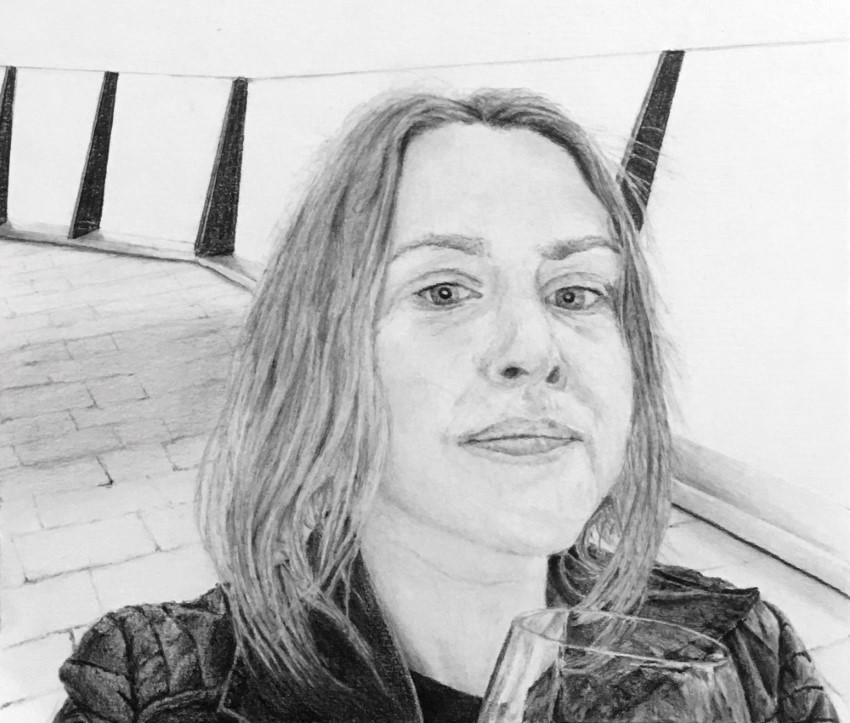 Portrait pencil drawing, Alin
Portrait pencil drawing, Alin
Edges
As opposed to comics drawing that is characterized by contour lines, which surround the figure, in realistic drawing with a pencil (or in any other way), there are no lines at all.
The edge of an object is where its shape or surface ends. It can end in a sharp way or in a soft way, but it is not a line!
Some objects, like fur or cloth, will have soft edges while other objects, like rocks or furniture will have hard edges.
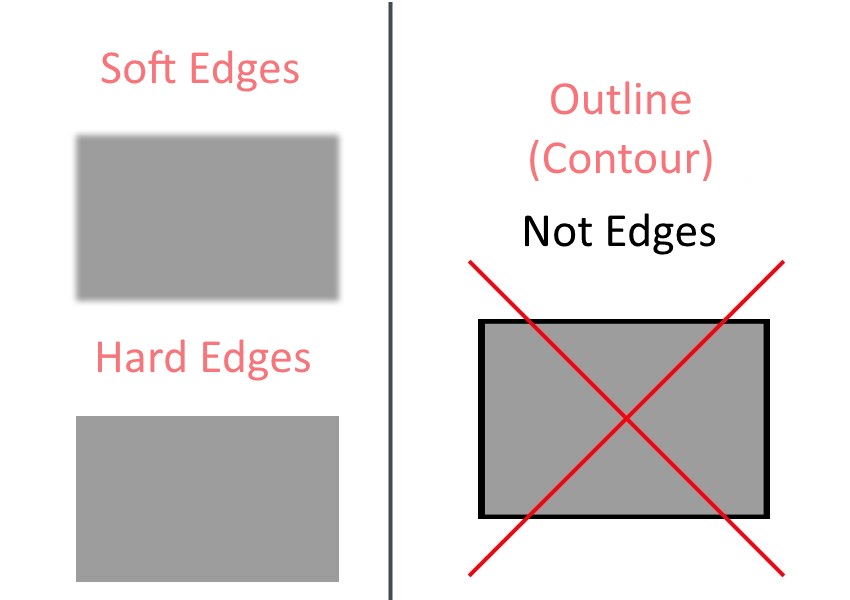 Edges vs outlines
Edges vs outlines
To draw a soft edge is to create a gradual transition (gradient) in brightness values, from dark to light.
Depending on climate conditions and distance, far away objects might have soft edges.
Remember:
Use lines only as guidelines to draw an accurate form. Draw them lightly, so they are easy to erase if needed.
How to draw soft edges:
There are many ways to draw soft edges (gradient from dark to light), depending on the effect you would like to achieve.
Hereby, three recommended ways:
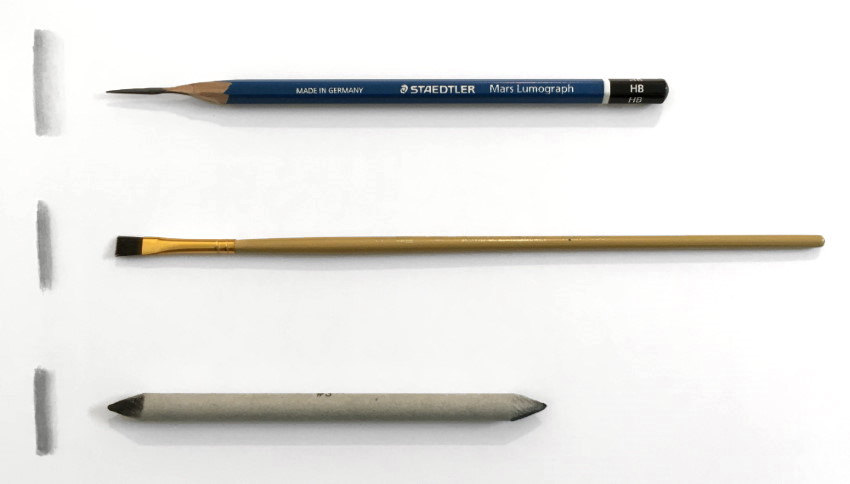 Methods to draw soft edges
Methods to draw soft edges
If you are not around your drawing equipment, you can always use a dry paper (like paper towel) or cloth to smooth edges.
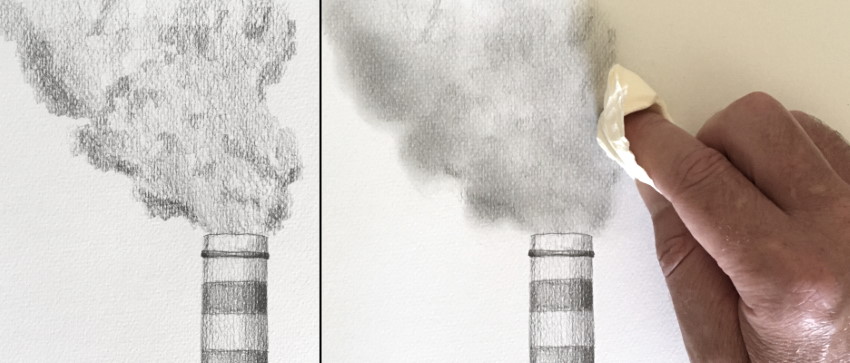 Soft edges with toilet paper
Soft edges with toilet paper
Note:
It is not recommended smudging a pencil drawing using one's finger. It can transfer body oils or sweat to the paper sheet.
Using soft edges for far away objects, will create a sense of depth.
Pencil drawing example:
 Soft edges for far object to add depth
Soft edges for far object to add depth
Shadows and reflections:
In many cases, shadows and reflections will have soft (or less defined) edges.
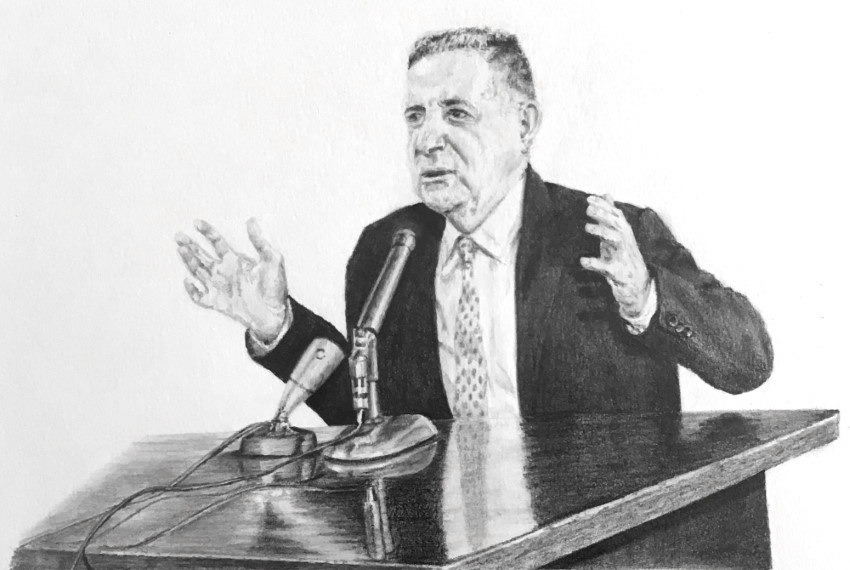 Less defined edges for reflections
Less defined edges for reflections
Transitions
When drawing with a pencil, it is important to pay attention to brightness values (how dark or light each area is) and edges (how each area or surface ends, either with a soft edge or a hard edge).
In addition, pay attention to transitions.
On a certain surface, areas, which are closer to a light source, will be lighter and areas farther away from the light source will be darker, meaning the surface will have a gradual transition in values.
Therefore, it is important to see the brightness values of a particular surface compared to other surfaces, but also the transitions of values within the surface itself.
Pencil drawing example:
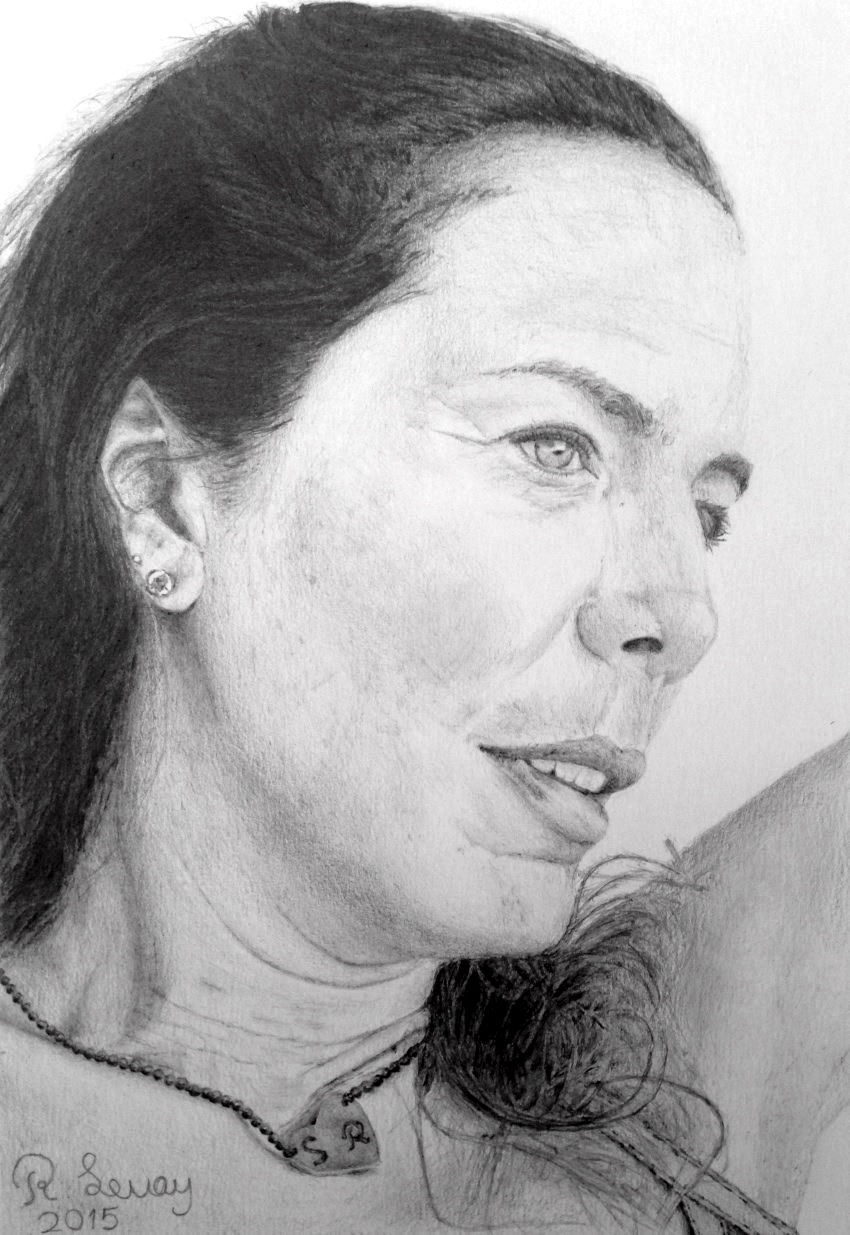 Portrait pencil drawing, Sharon
Portrait pencil drawing, Sharon
In the next example, I used transitions in brightness values to draw the folds in the neck area.
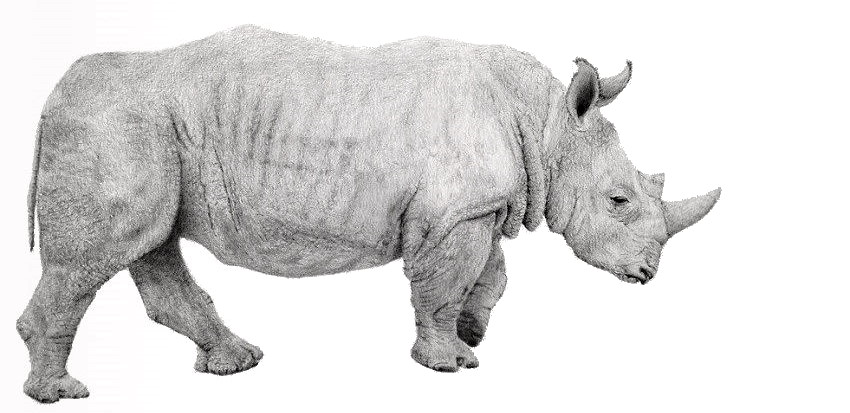 Rhinoceros pencil drawing
Rhinoceros pencil drawing
Remember:
Every part of each drawing will have transitions. An area with no transitions will look flat and unnatural.
Drawing Tips
Where to start drawing?
If you are right-handed, start drawing from the upper left part of a paper sheet and gradually move to the lower right.
For left-handed artists, it is recommended to start at the upper right part of the paper.
In this way, the palm can rest on the blank surface of the drawing-paper and not smear what has already been drawn.
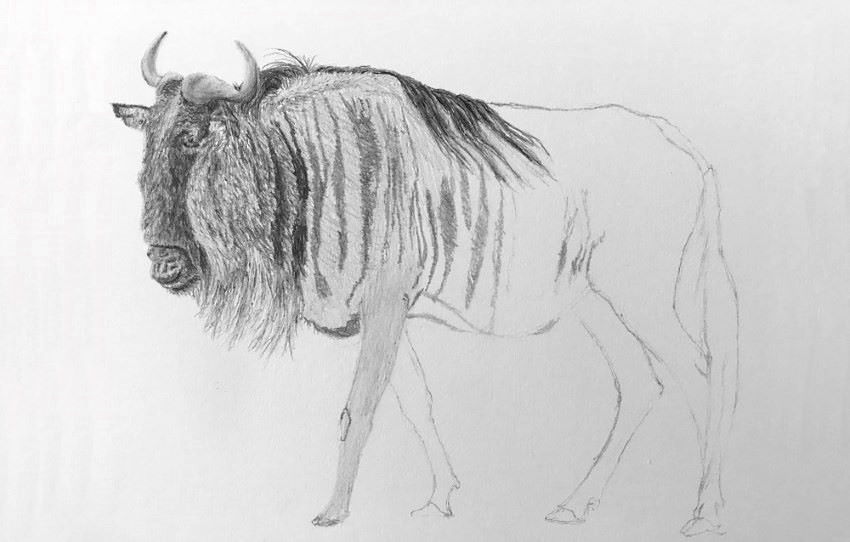 Drawing from left to right
Drawing from left to right
Where to put the light source?
If you are right-handed, place the lighting on the left side, so that the palm will not block the source of light, and you can see little details while drawing.
If you are left-handed, place the lighting on the right side.
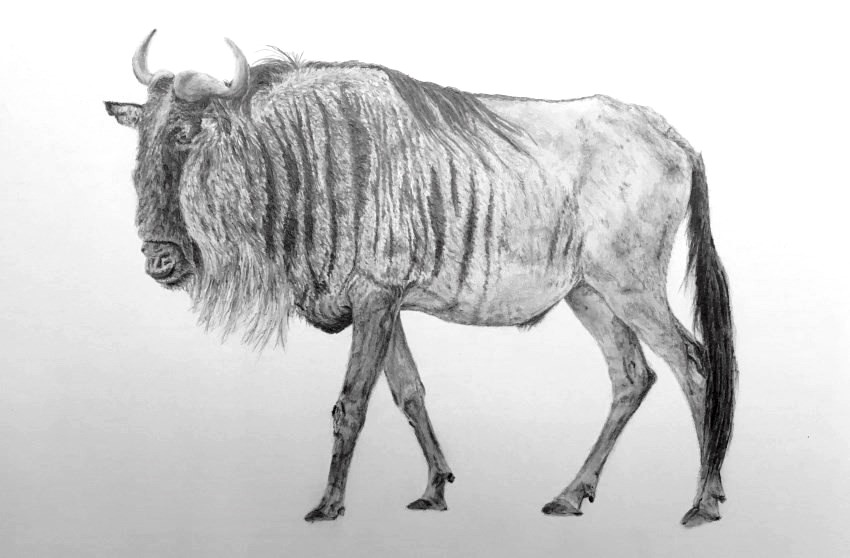 Wildebeest pencil drawing
Wildebeest pencil drawing
How to hold a pencil?
By using the thumb, you can move the pencil body upwards and use it as a measuring device.
When releasing the thumb, the pencil will be back in place for drawing:
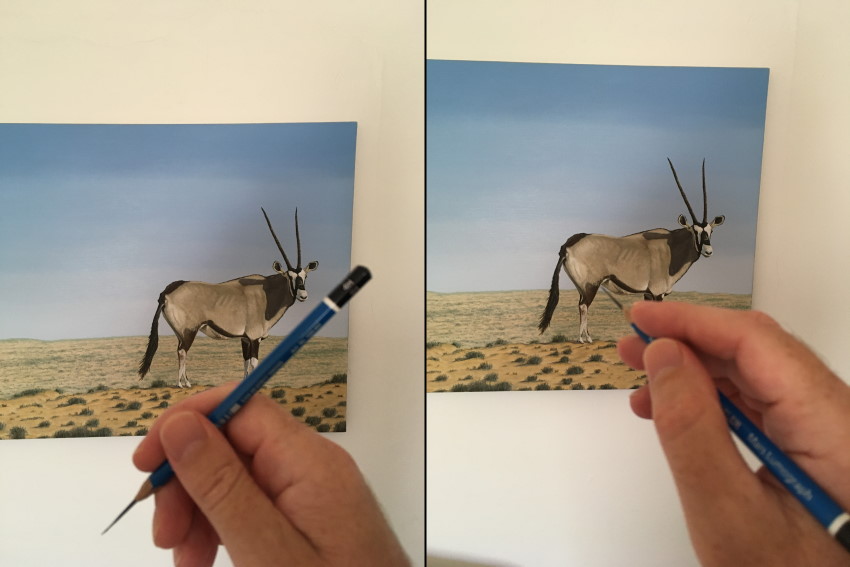
How to avoid smearing?
In order to avoid smearing the drawing or transfer body oils or sweat to a drawing paper, it is advisable to place a blank sheet of paper under the drawing hand, so that the palm is not placed on the drawing-paper.
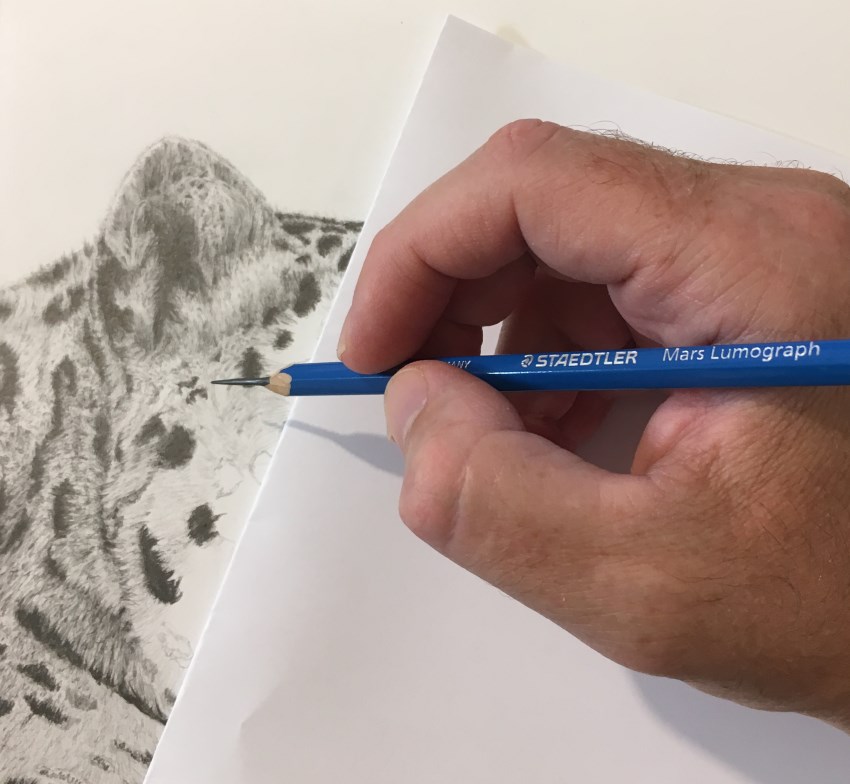
Another option is to use a transparent paper sheet under the drawing hand, that way smearing is avoided and the drawing can be seen.
How to use your drawing equipment?
It is best not to press hard when drawing in order not to damage the paper sheet you are drawing on.
Draw as if you are using a paintbrush, softly and gently. You will get smooth results, and you do not need to use smoothing tools.
Use thick paper for your artworks, it is more durable. Thin paper sheets are great for practice.
I prefer paper with at least 150 g/m thickness, ideally 180 g/m or more:

Do not lean hard on paper (with any hand) when drawing, to avoid dents.
How to use a grid?
The center of a reference image is the point where the two diagonals meet.
After finding the midpoint, draw a horizontal line and a vertical line in order to divide the image into four rectangles.
If an image is large and complex, you can divide each rectangle repeatedly to have more grid lines.
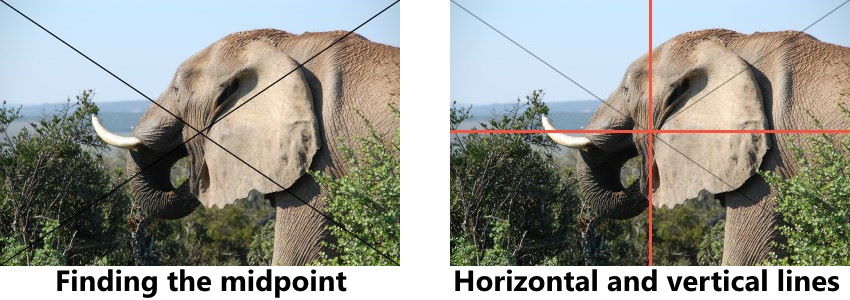
Next step is creating a grid for your drawing paper, which is the same process of finding the midpoint and creating vertical and horizontal lines.
Remember that the ratio between the width and height of your drawing paper should be exactly like the reference image. You can always crop the reference image to fit the ratio of the drawing paper.
Now it is possible to draw inside each rectangle separately. Consequently, the drawing process becomes easier and more precise.
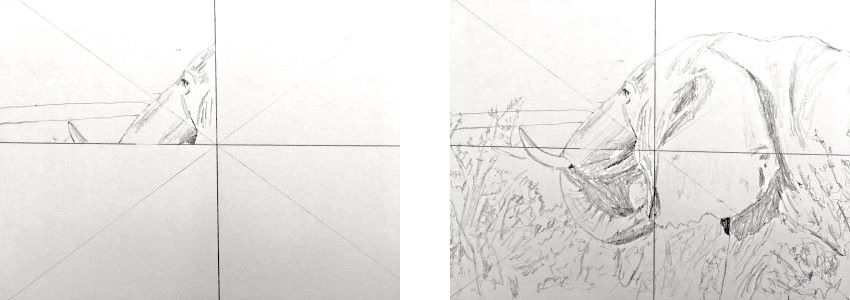
When drawing grid lines, do it gently, so they are easy to erase later!
While I rarely use grid lines when drawing, for commission drawings, especially with limited time, I use grid lines for efficiency and speed.
Commission drawing process:
I start by drawing the form accurately.
Then I pay attention to the other 3 factors (brightness values, edges & transitions).
I am right-handed, so I draw from left to right and from top to bottom:
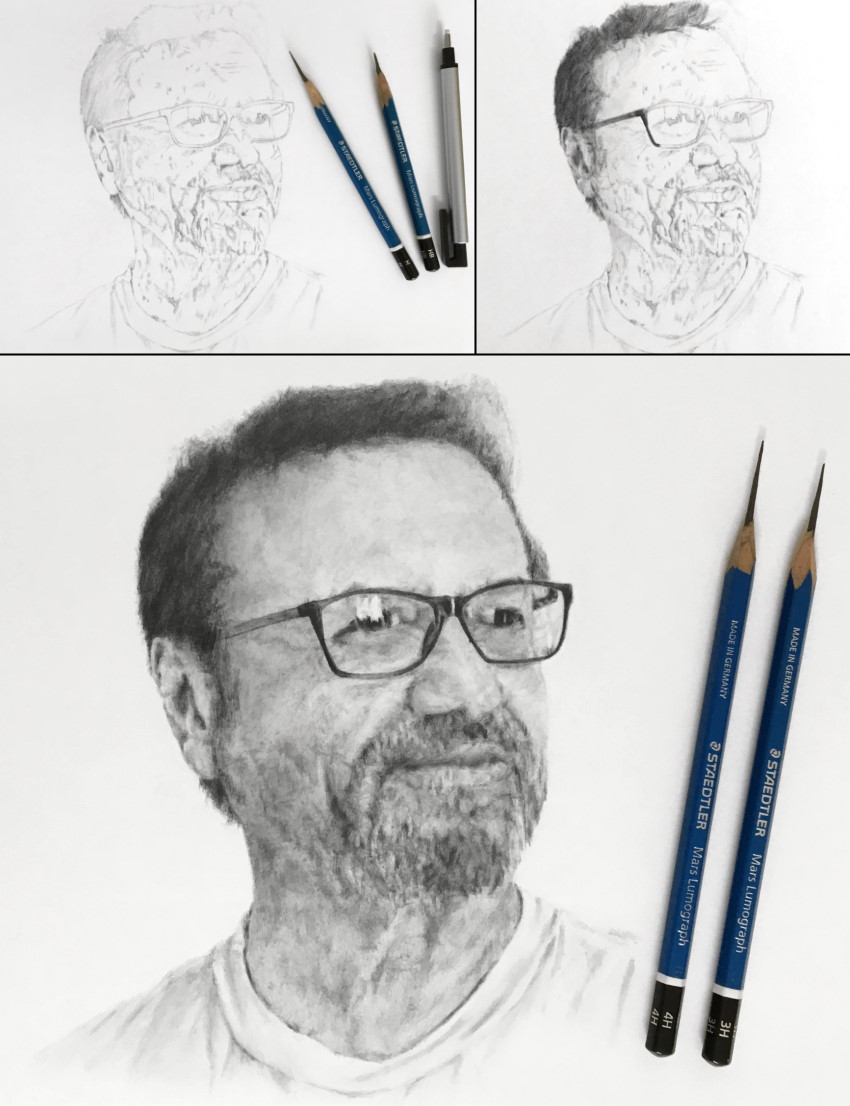
For more tips, check out my fine art painters gallery for exclusive painting tips by professional painters.
Which paper size to use?
Realistic drawing is time-consuming.
A drawing of an animal or a portrait, on an A4 paper sheet, can last 15-40 hours.
Therefore, I do not recommend drawing on a large paper sheet.
Depending on the project, I use these paper sizes: A5 (small), A4 (medium) and A3 (large).
How to draw straight borders?
When using just part of a paper for drawing, it is useful to border it with masking tape.
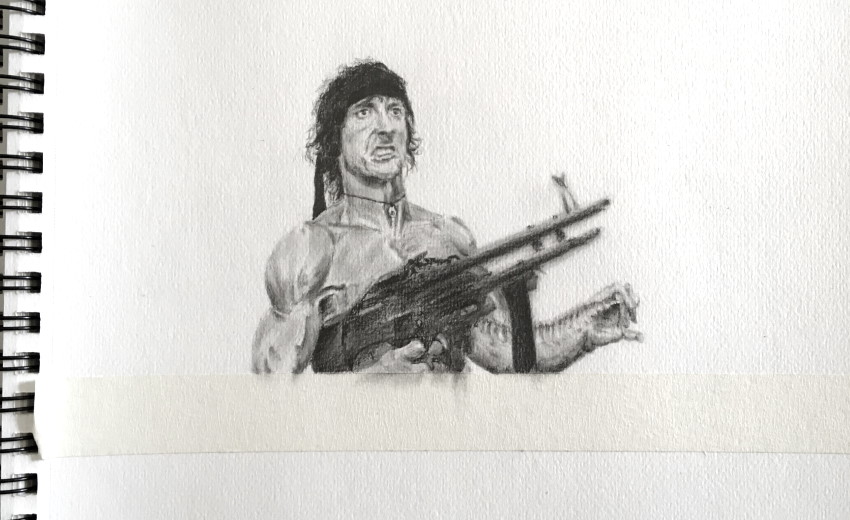
When the drawing is ready, remove the masking tape, and you will have a straight border.
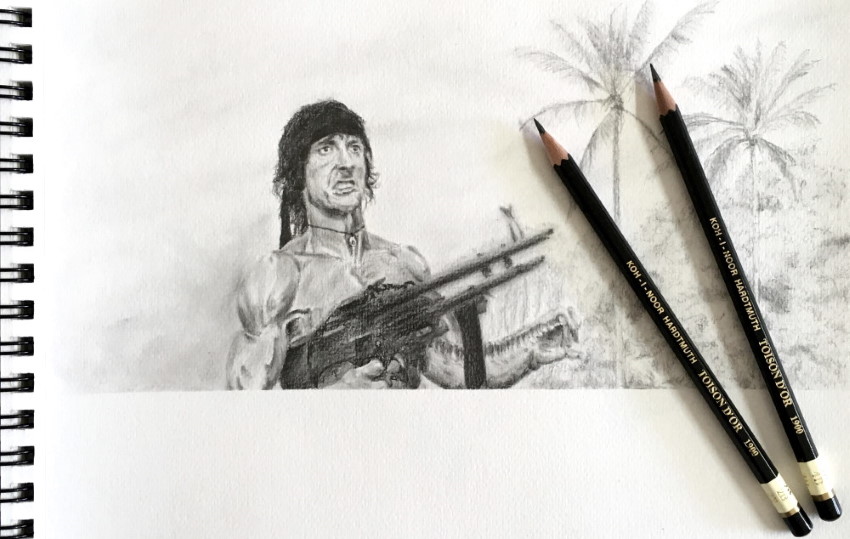
Pen Drawing
While there are no lines in nature or in realistic pencil drawing, pen drawing is characterized by drawing lines.
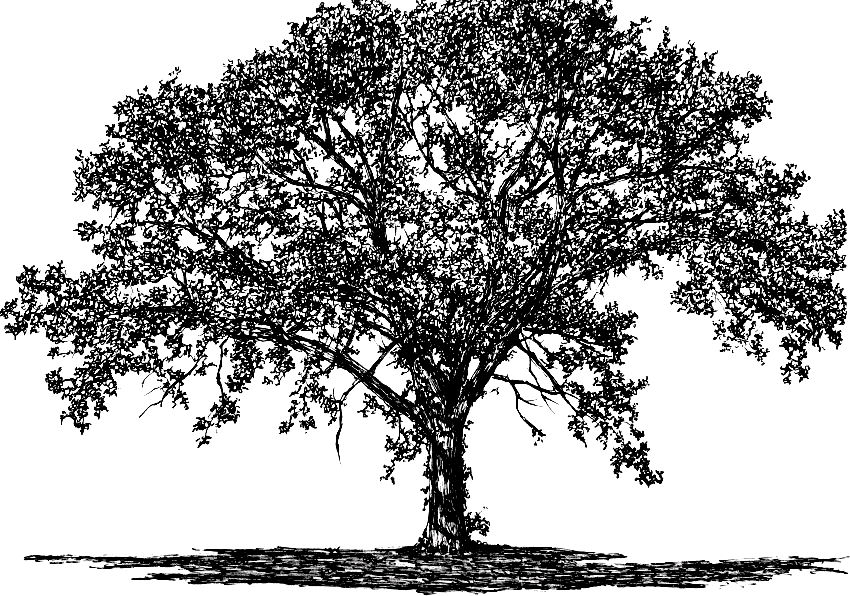 Drawing using lines
Drawing using lines
It is recommended to use a technical pen (fineliner) for drawing.
For recommended pen brands to use, visit my review on drawing pens for artists.
A pen has a fixed brightness value!
The way to create the illusion of different brightness values when drawing with a pen is to create more lines in the same area for a darker value and fewer lines for a lighter value.
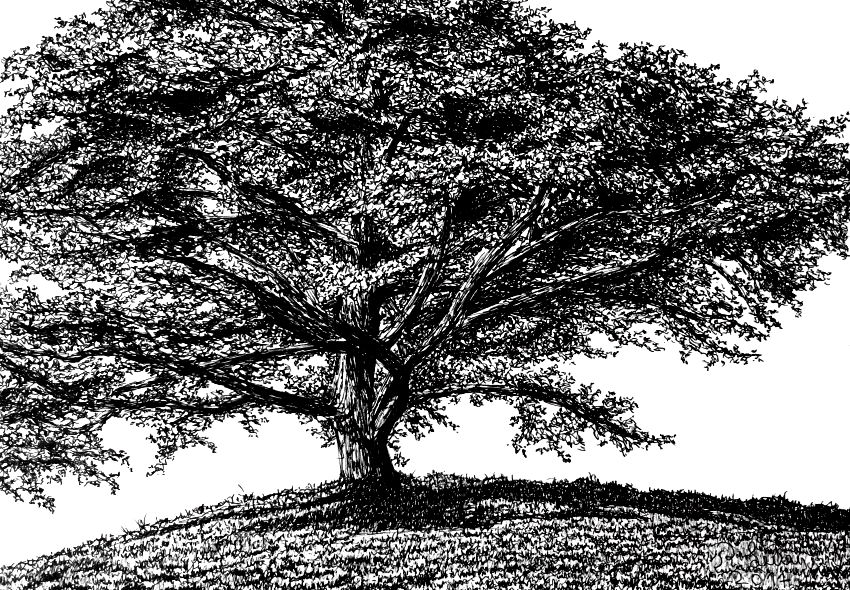 Brightness values using lines
Brightness values using lines
If you like drawing with pens, you might like my tutorials on how to draw trees and how to draw flowers.
Summary
Since all materials are made of molecules, they will never be one hundred percent smooth.
Light travels as a wave, therefore shadows will not be completely sharp.
For these reasons, there are no lines in nature!
When drawing with pencils, it is all about transitions in brightness values and different types of edges.
That said, in art, it is possible to create realistic looking drawings, using only lines, by creating the illusion of transitions, brightness values and edges.
For an in-depth article about drawing and painting realism, visit The 8 Key Factors for Painting Realism.
To understand and add depth when drawing, visit my guide for creating the illusion of depth in art, it includes 15 proven ways to draw depth, with many examples!
While it is convenient to draw from images, I recommend practicing drawing from direct observation. Read my still life composition-drawing tutorial to see how to plan your composition.
![]()
![]()
Copyright © RanArtBlog.com. All Rights Reserved. | Sitemap
how to draw a top
Source: https://ranartblog.com/blogarticle03.html
Posted by: ottvoymaiden.blogspot.com

0 Response to "how to draw a top"
Post a Comment